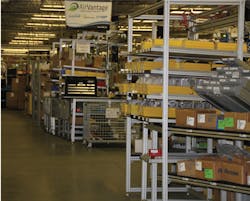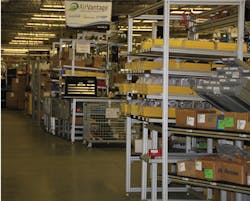Developing a culture of change acceptance is the focal point of making Continuous Process Improvement work. Many organizations claim to devote resources towards implementing strategic and tactical plans for Continuous Process Improvement implementation; they are motivated by the success stories they have heard and read about. Organizations are also threatened by the realization of their future if they do not have a Continuous Process Improvement implementation plan.
The pace of change in manufacturing, the service markets, and academia, for example, is moving quickly. If these types of organizations do not modify their culture to accept change, their success will be short-lived. The culture of an organization needs to be self-sustaining and fundamentally structured to embrace change and address it effectively and efficiently.
At air-operated double-diaphragm (AODD) pump manufacturer Warren Rupp Inc., culture begins with the executives and relies on their guidance to nurture an environment that is change ready. Continuous Process Improvement is Warren Rupp’s management philosophy, one that strives for complete customer satisfaction. To achieve this goal, there are three critical success components:
- Strategic: the utilization of resources through large-scale, long-range
planning and development - Tactical: Dealing with the use and deployment of personnel
- Cultural: The component that drives teams to quicker, more dramatic improvements in sigma performance
The cultural component is one that is overlooked by most organizations, but is primary at Warren Rupp. Data from studies indicate successful change takes place when the need for change is communicated. In unsuccessful change groups, the need for change was never understood.
| In Practice: Material Flow Optimization Warren Rupp is a prospering manufacturing company and is growing accordingly. To accommodate this growth, Warren Rupp has developed and is implementing a "Material Flow Optimization" plan. This plan is designed to convert from a build and then batch (hand carts) transport through paint and packaging to a more efficient one-piece flow (conveyor) to increase throughput and reduce lead time. Due to rapid increase in past sales growth, pump assembly cells are currently placed sporadically throughout the facility. The new layout places these assembly cells in a linear fashion with a floor conveyor transporting the pumps through a paint process and finally dropping them off in the packaging area. The most immediate impact we will see from this project is the alleviation of transport waste. |
The success of Warren Rupp starts at the top, with the vision and guidance of the leadership team. The leadership team recognizes it must continuously identify strengths and weaknesses, and work to make improvements in both areas. To act only on the weaknesses would be detrimental to the future success of the business. Consideration and resources are dedicated to reinforcing strengths and overcoming weaknesses. In the past, it made sense to measure performance and focus on improving areas of weakness. Today, however, technological advances and the speed in which they can be implemented allow Warren Rupp to give equal deliberation to strengths. Warren Rupp leaders have the vision to reflect on this shift to assure that their strengths remain their core, while not compromising market shares as they also strengthen their weakness congruently.
The universal reaction to the word change is loss or subtraction. Therefore, resistance to Continuous Process Improvement should be expected. Organizations change to reflect the Continuous Process Improvement culture. Warren Rupp develops employees, rewards Continuous Process Improvement initiatives, recognizes Continuous Process Improvement performance, and communicates to the entire team to create a culture of acceptance of Continuous Process Improvement.
Continuous Process Improvement is a proven management philosophy. At Warren Rupp, that has improved productivity by improving the effectiveness and efficiency in which business is conducted. Most organizations cover the tactical aspect of Continuous Process Improvement; Warren Rupp addresses the cultural concept of acceptance within.
Ed Stone has 30-plus years experience as a manufacturing professional with in-depth knowledge of Quality Assurance, Kaizen/Lean-sigma process improvements, and customer relations. Mr. Stone has worked for Warren Rupp as a Quality Engineer for nearly two years. He earned his bachelor’s degree in Manufacturing Technology with a specialization in Applied Quality Science from Bowling Green State University.



